
.
If you have any comments, observations, or questions about what you read here, remember you can always Contact Me
All content included on this site such as text, graphics and images is protected by U.S and international copyright law.
The compilation of all content on this site is the exclusive property of the site copyright holder.
Crossroads of the Revolution. The Tomato State. New Jersey's official nickname, however, is The Garden State. Rutgers, the State University of New Jersey is its land grant university. And here in Hunterdon County is the 390 acre Clifford E. and Melda C. Snyder Research and Extension Farm. It's a wonderful place doing research on crop production. There's the Great Tomato Tasting public event late in summer. And exploration of orchards crops too. Let's go for a tour.

The open site is rather exposed. At Snyder Research Farm they're using an all male hybrid willow that originated in New Zealand, noted for its dense, rapid growth, for windbreaks. Its value is both practical and aesthetic: secondary importance - at 70 feet tall it provides a visual screen. More importantly to the farmer, such windbreaks reduce wind-related damage and also reduce the potential for spray drift, definitely a matter of concern where the interface of rural farm operations and residential sprawl increasingly become a challenge. Here is a windbreak of Aussie willow trees sheltering a peach orchard.
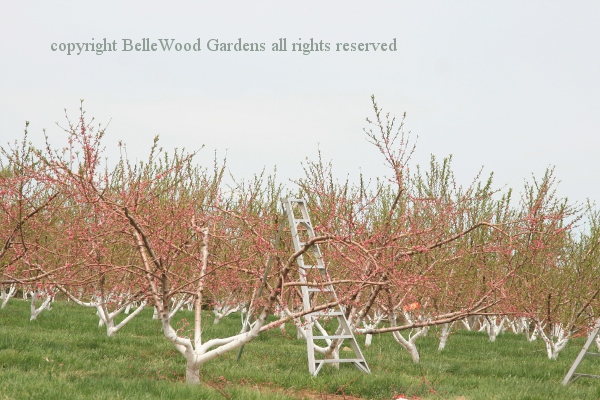
The whitewashed trunks protect the trees from sun scald and damage from borer insects.

A row of young pear trees, just about at peak bloom.
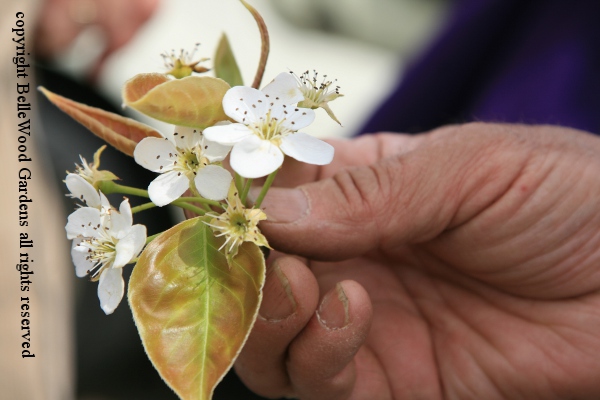
.
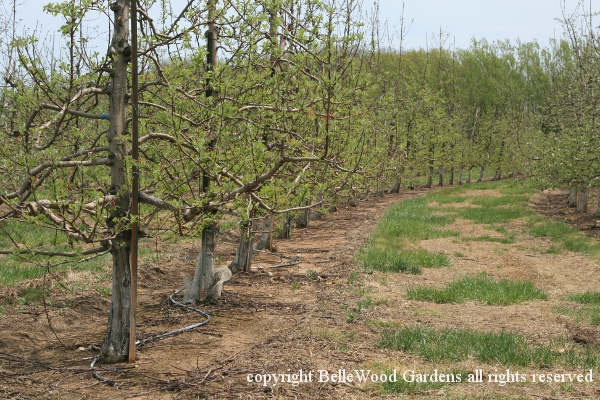
Contour planted row of apple trees. While there's testing and trials of different cultivars to ascertain their suitability for New Jersey orchards that's just the tip of the studies done here. Research at the farm explores use of dwarfing and semi-dwarfing rootstocks to control mature size of trees, as well as intensive planting with spire style trees to increase yield per acre. Pruning, fruit thinning, training new growth are all intensive, hands on work.

Spread the branches for a more open habit. This can be done using notched boards,
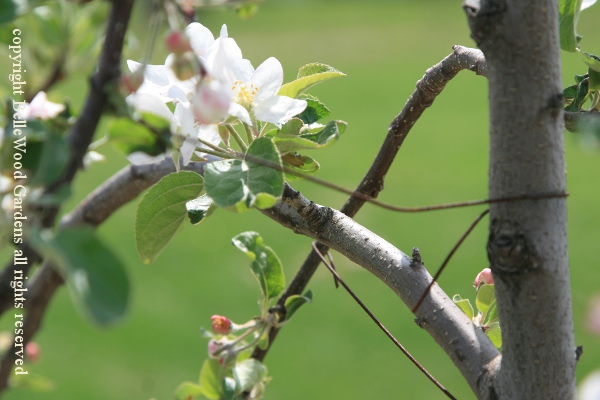
hooks made from stiff wire,

or weights made from concrete poured into disposable cups and allowed to harden.
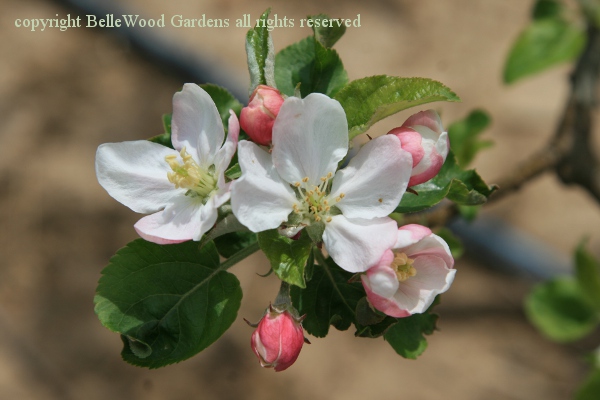
Pretty pink and white apple blossoms. But if all the flowers in the cluster are allowed to set fruit, why, then they'll grow into undersized apples. Thinning is an important part of orchard care. There's a lot to do, between flower and harvest. Our tour was a good introduction to the important research and educational efforts for both commerical orchardists and home gardeners that's done here, at the Snyder Research Farm.
Back to Top
Back to May 2014